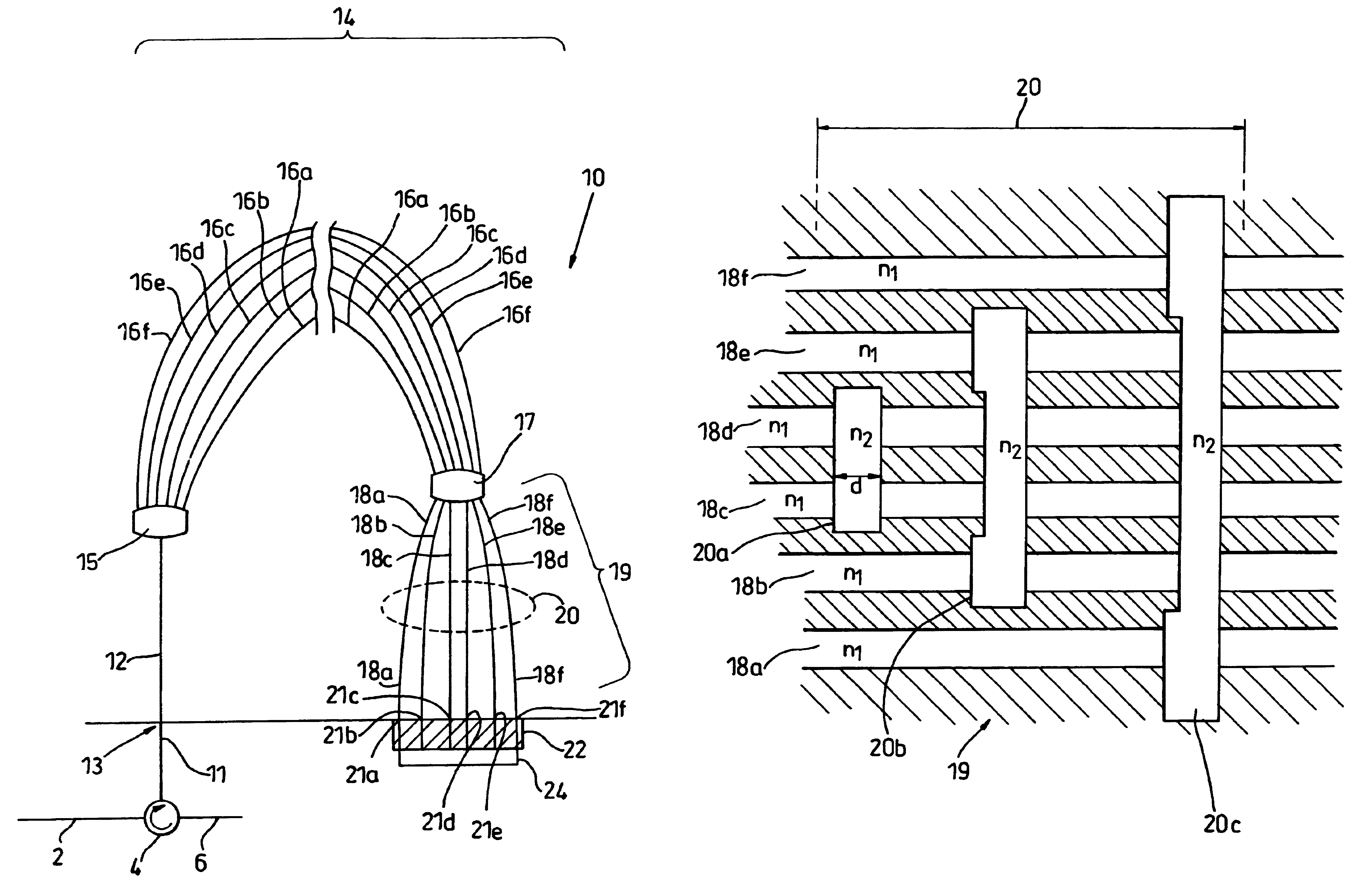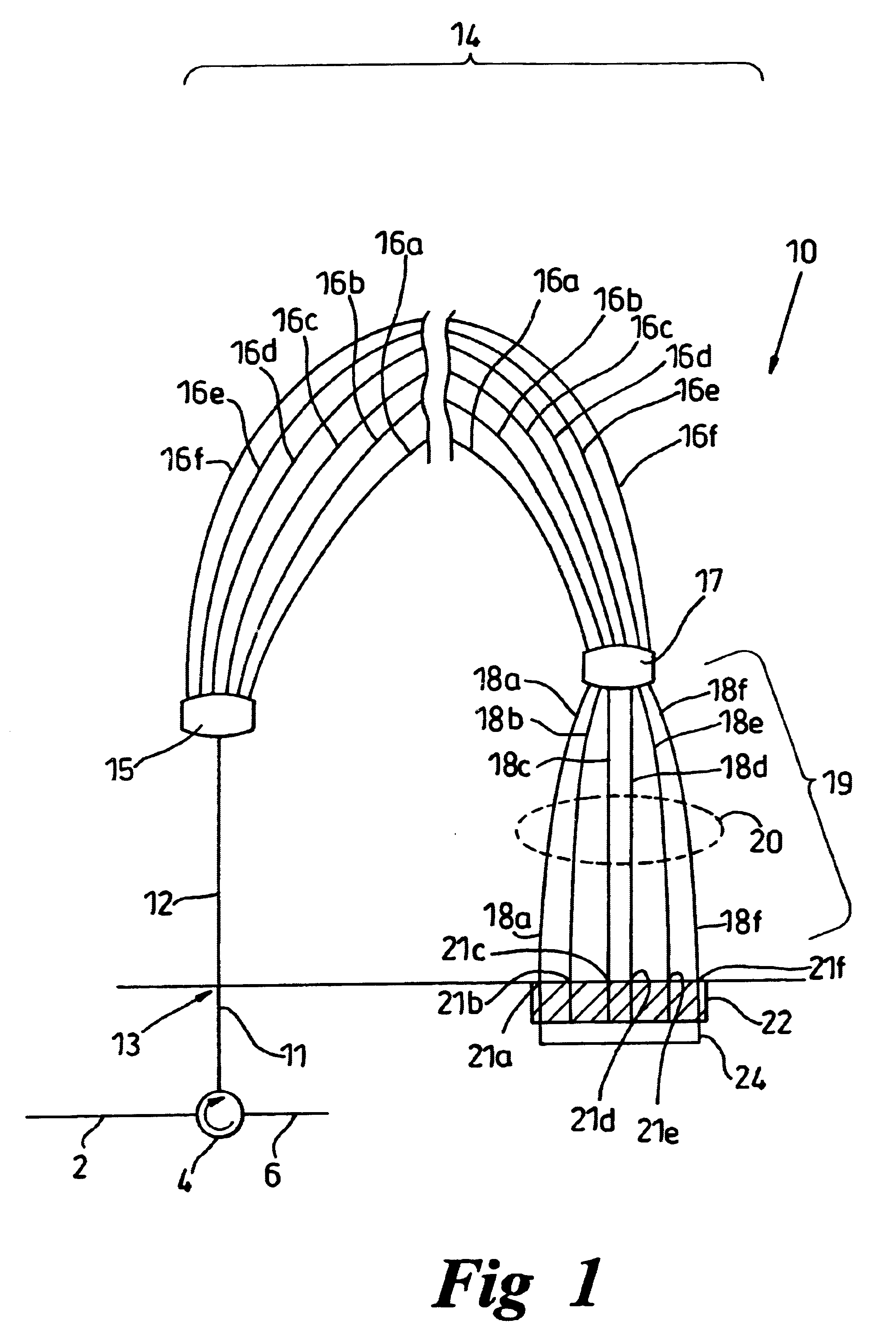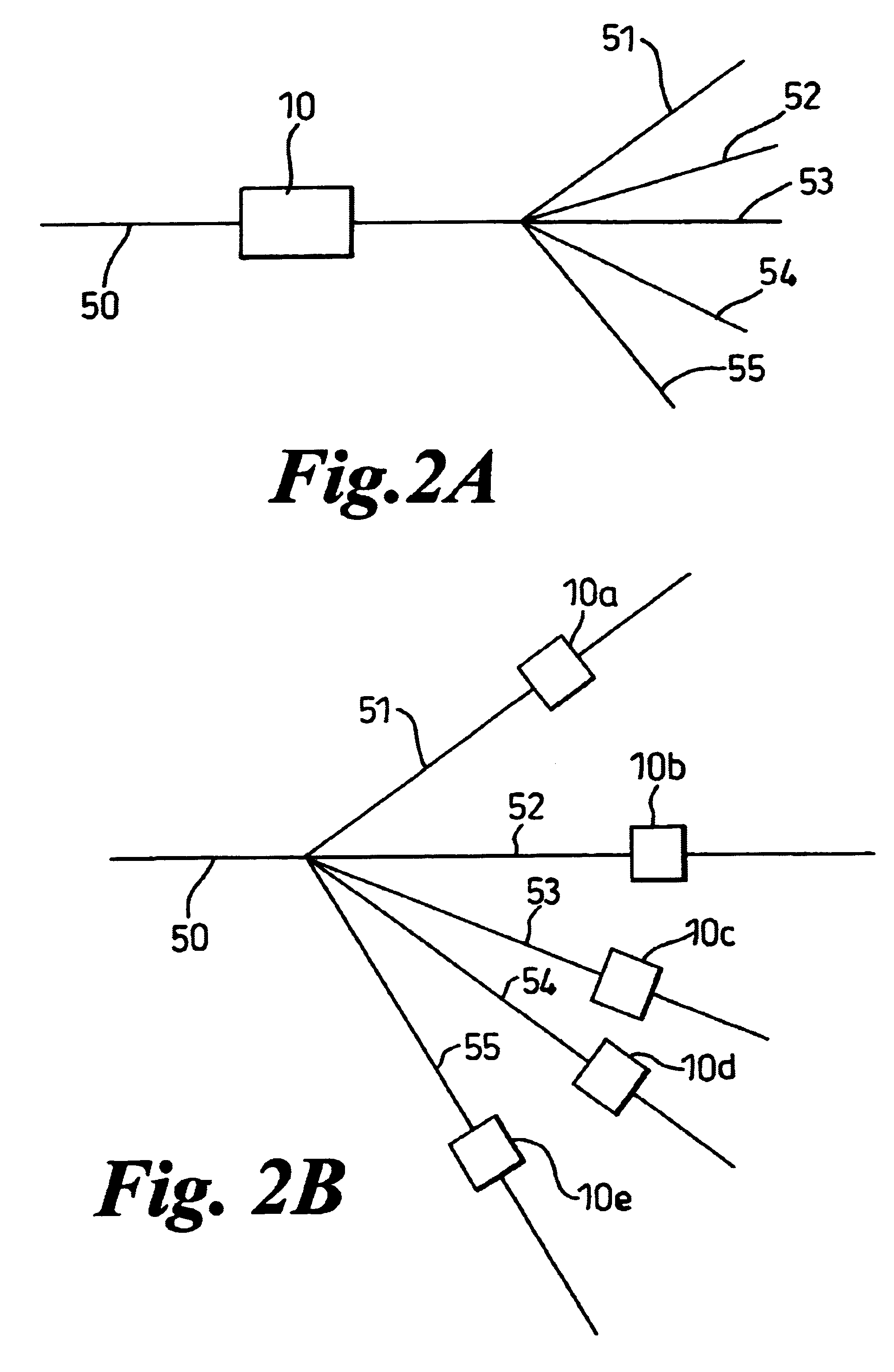Planar waveguide dispersion compensator
a compensator and waveguide technology, applied in the direction of optical waveguide light guide, instruments, optics, etc., can solve the problems of chromatic (wavelength dependent) dispersion of optical signals propagating along a fiber, material is generally considered unsuitable for pulse reforming, and the transmission system of glass fiber pulse code modulation (pcm) is known to suffer from chromatic dispersion
- Summary
- Abstract
- Description
- Claims
- Application Information
AI Technical Summary
Benefits of technology
Problems solved by technology
Method used
Image
Examples
Embodiment Construction
There will now be described by way of example the best mode contemplated by the inventors for carrying out the invention. In the following description numerous specific details are set forth in order to provide a thorough understanding of the present invention. It will be apparent however, to one skilled in the art, that the present invention may be practiced without limitation to these specific details. In other instances, well known methods and structures have not been described in detail so as not to unnecessarily obscure the present invention.
Referring now to the drawings, FIG. 1 is a sketch of a dispersion compensator 10 according to a first embodiment of the invention. In FIG. 1, the dispersion compensator 10 is implemented as a planar device.
In FIG. 1, an optical signal travelling along channel 2 passes through circulator 4 to channel 11. An optical signal returning along channel 11 is directed along channel 6. The optical signal is received by the planar waveguide dispersion...
PUM
 Login to View More
Login to View More Abstract
Description
Claims
Application Information
 Login to View More
Login to View More - R&D
- Intellectual Property
- Life Sciences
- Materials
- Tech Scout
- Unparalleled Data Quality
- Higher Quality Content
- 60% Fewer Hallucinations
Browse by: Latest US Patents, China's latest patents, Technical Efficacy Thesaurus, Application Domain, Technology Topic, Popular Technical Reports.
© 2025 PatSnap. All rights reserved.Legal|Privacy policy|Modern Slavery Act Transparency Statement|Sitemap|About US| Contact US: help@patsnap.com



